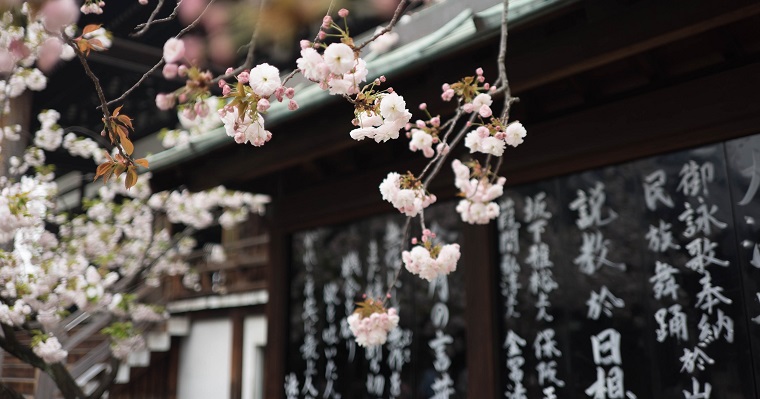4 min to read
10 Haiku Poets You Need to Know
Exploring the World of Haiku 10 Poets You Need to Know

Introduction
Haiku, a traditional form of Japanese poetry, has transcended cultural boundaries to become a cherished art form globally. Renowned for its minimalistic style, emphasis on nature, and the remarkable ability to encapsulate moments and emotions within a few lines, haiku has inspired countless poets throughout history. In this article, we embark on a journey to discover 10 haiku poets whose contributions have left an indelible mark on this revered poetic genre. Join us as we delve into their unique styles and explore exemplary pieces of their work.
Testing out latex
\[\nabla_\boldsymbol{x} J(\boldsymbol{x})\]testing if markup latex works
Hi $z = x + y$.
$$a^2 + b^2 = c^2$$
$$\begin{vmatrix}a & b\\
c & d
\end{vmatrix}=ad-bc$$
1. Matsuo Basho (1644-1694)
Matsuo Basho stands as one of the preeminent haiku poets in history. Revered for his focus on nature and his knack for distilling the essence of a moment into a few carefully chosen words, Basho’s haiku poems exude simplicity, elegance, and powerful imagery.
An old silent pond
A frog jumps into the pond—
Splash! Silence again.
This haiku captures the serenity and sudden movement of nature, showcasing the beauty of Basho’s poetic style.
2. Yosa Buson (1716-1784)
Yosa Buson, a haiku poet and painter, brought a unique fusion of art forms into his poetic expression. His haiku often depict natural scenes, featuring vivid imagery and emotional depth.
Winter solitude—
in a world of one color
the sound of wind.
This haiku paints a picture of the beauty and isolation of winter, showcasing Buson’s ability to evoke complex emotions with simplicity.
3. Kobayashi Issa (1763-1828)
Known for his humor and playfulness, Kobayashi Issa’s haiku delve into everyday life and the struggles of common people. His poems are characterized by simplicity, humor, and a deep compassion for the human condition.
A giant firefly:
that way, this way, that way, this—
and it passes by.
This haiku captures the playful and unpredictable nature of a firefly, highlighting Issa’s distinctive style.
4. Masaoka Shiki (1867-1902)
Masaoka Shiki played a pivotal role in modernizing haiku poetry. Introducing new techniques, such as free verse and the inclusion of human emotions, Shiki’s haiku often depict natural scenes with emotional depth and a modern sensibility.
The light of a candle
Is transferred to another candle—
Spring twilight
This haiku reflects on the ephemeral nature of light and the beauty of changing seasons, showcasing Shiki’s innovative style.
5. Chiyo-ni (1703-1775)
Chiyo-ni’s haiku poems focus on the beauty and wonder of nature, particularly flowers. Characterized by simplicity, elegance, and emotional depth, her work has inspired poets throughout history.
On a withered branch
A crow has alighted:
Nightfall in autumn.
This haiku captures the melancholy and beauty of autumn, exemplifying Chiyo-ni’s poetic style.
6. Takahama Kyoshi (1874-1959)
Takahama Kyoshi’s haiku poems center on the natural world, particularly the changing seasons. Known for simplicity, clarity, and emotional depth, his work continues to inspire poets globally.
A mountain village—
under the piled-up snow
the sound of water.
This haiku depicts the peaceful and serene quality of a winter scene, showcasing Kyoshi’s poetic style.
7. Kawai Chigetsu (1888-1943)
Kawai Chigetsu’s haiku explores the beauty and wonder of the natural world, emphasizing the changing seasons. Characterized by simplicity, clarity, and emotional depth, her poems resonate across cultures.
A water melody:
all over the jade green lake
the sound of silence.
This haiku captures the peaceful and tranquil quality of a serene natural scene, exemplifying Chigetsu’s poetic style.
8. Hoshino Tatsuko (1900-1984)
Hoshino Tatsuko’s haiku poems focus on the beauty and wonder of nature, particularly the changing seasons. With simplicity, elegance, and emotional depth, her work continues to inspire poets worldwide.
Through the dense fog
A distant bell tolls—
Autumn evening.
This haiku captures the haunting and mysterious quality of a foggy autumn evening, showcasing Tatsuko’s poetic style.
9. Haku Rakuten (1780-1839)
Known for his humor and playfulness, Haku Rakuten’s haiku depict everyday life and the struggles of common people. Characterized by simplicity, humor, and compassion, his work resonates with the human condition.
The moon in the sky
Feels colder than the snow—
Winter solitude.
This haiku reflects on the loneliness and beauty of a winter night, showcasing Rakuten’s unique style.
10. Ozaki Hōsai (1885-1926)
Ozaki Hōsai’s haiku poems explore the beauty and wonder of the natural world, particularly the changing seasons. With simplicity, elegance, and emotional depth, his work continues to inspire poets globally.
A butterfly's wings—
a single petal falls, revealing the sky.
This haiku captures the ephemeral and delicate beauty of a butterfly’s wings, exemplifying Hōsai’s poetic style.
Final Thoughts
Haiku poetry, with its rich history spanning centuries and continents, finds its brilliance in the works of these 10 influential poets. By studying their techniques and styles, one can deepen their understanding of haiku poetry, gaining inspiration to create their own beautiful and evocative haiku poems.

Comments